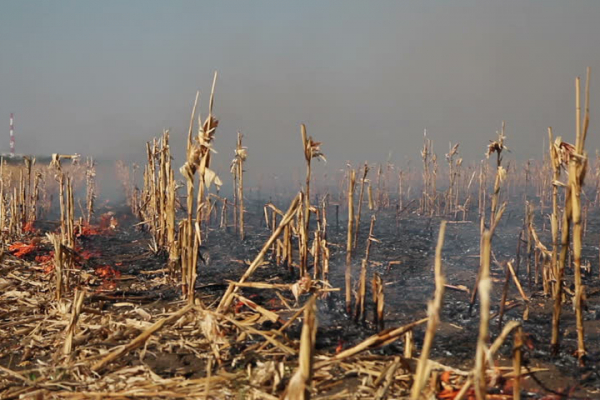
“It never rains but pours,” goes an old Chinese proverb. This is what can be said when you plant your crop, anticipating a bumper harvest, only for that crop to be gutted down by a veld fire, a few days before the harvest. So sad it is indeed, especially if the crop was not insured against such disasters.
It feels like a nightmare when you watch hopelessly as the inferno destroys all your hopes, only to find out that you are never going to wake up.
This was the case for Doctor Howard Marowa, a 51-year-old veterinary surgeon who doubles as a farmer in Makonde District, about 115km from the capital. As a beneficiary of the command agriculture programme, Doctor Marowa had planted close to 20 hectares of wheat on his plot. The crop had survived all pests including quelea birds, however, misfortune came knocking on Marowa’s door.
“I benefited from the Command Agriculture Programme, hence I planted my winter crop on 20 hactares of land. The crop was so promising that I anticipated a bumper harvest. However, a few days before harvest everything was destroyed in an inferno. A veld fire which started three farms away caused all my proceeds to go up in smoke,” Marowa narrated his ordeal.
This is one of the many cases in which crops are lost to veld fires. Veld fires are described as fires that get out of control and, in the process, destroy the environment, life and property, among others.
According to the Environmental Management Agency (EMA), spokesperson, Steady Kangata: “The fire season, which starts on July 31 ending on October 31, is characterised by dangers of runaway fires as the weather and vegetative conditions will be conducive; dry biomass, high temperatures and wind.
“All land owners and users are required to put in place measures that suppress fires such as fireguards which are at least 9 metres wide. This is a requirement according Statutory Instrument 7: Environmental Management (Environmental Impact Assessment and Ecosystems Protection) Regulation of 2007.”
For Marowa, although he had complied with the statutory requirement, it was no defence against fate.
- Chamisa under fire over US$120K donation
- Mavhunga puts DeMbare into Chibuku quarterfinals
- Pension funds bet on Cabora Bassa oilfields
- Councils defy govt fire tender directive
Keep Reading
“I had constructed fireguards right round my farm to protect my crop from veld fires. Nevertheless, on the fateful day the wind blew intensely such that efforts to fight the fire from the fireguard were fruitless.”
Kangata said: “The burnt area since August 1, 2016 is 3,16% of Zimbabwe’s total land area. The cumulative burnt area of 1 217 957,23ha from 2 648 fire incidents translates to 4,38% increase compared to the same period in 2016 when 1 575 fire incidents were recorded burning 1 166 793,47 ha of land.
“There is need to extend the fire season so that it ends at the onset of the first rains. With climate change at hand, the first rains are coming as late as mid-November, hence the need for review, “ he said.
Fire related offences attract a not exceeding level 14, which translates to
$5 000 or one year imprisonment or both. However, such issues have been trivialised by the courts and as such environmentalists are advocating for an environmental court which deals purely with environmental issues.
Veld fires also had a devastating impact on forests. According to the Forestry Commission spokesperson, Violet Makoto, 38 053 hectares of forest land were destroyed and these include Pandamasuie, Ngamo and Sikumi forests in Matabeleland North, where most gazetted forests are located.
“Forest produce such as thatch grass and deadwood used as fuel by communities around these areas were destroyed by veld fires during the season. There is need to strengthen awareness activities in adjacent communities where most of the fires emanated and strict monitoring on leaseholders operating in forest areas to improve their fire preparedness,” she said.
The 2017 fire season was one of the worst because of the heavy rains received during the 2016-2017 rainy season which promoted the growth of lots of vegetation.
In 2017, six people were burnt to death by fires bringing to 101 the cumulative total from 2009 to date.











